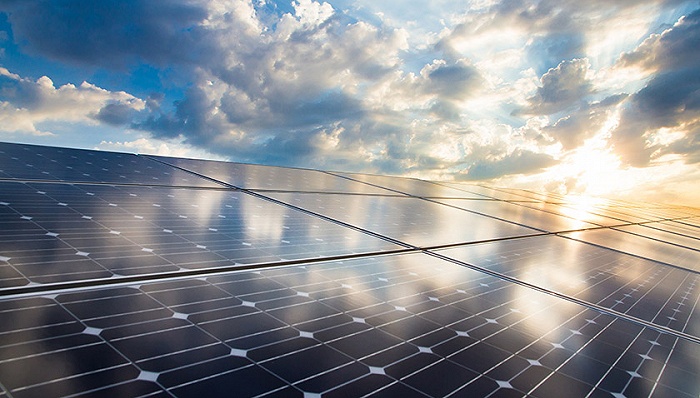The Cost of Clean Energy has Dropped Dramatically
time:2023-08-15 09:52:46 Views:0 author:Jinan Freakin Power Ltd.
Fifteen years ago, solar panels, wind turbines and battery-powered vehicles were widely viewed as niche technologies, too expensive and unreliable for mainstream use. But clean energy became cheap far faster than anyone expected. Since 2009, the cost of solar power has plunged by 83 percent, while the cost of producing wind power has fallen by more than half. The price of lithium-ion battery cells fell 97 percent over the past three decades.
Today, solar and wind power are the least expensive new sources of electricity in many markets, generating 12 percent of global electricity and rising. This year, for the first time, global investors are expected to pour more money into solar power — some $380 billion — than into drilling for oil. The rapid drop in costs for solar energy, wind power and batteries can be traced to early government investment and steady improvements over time by hundreds of researchers, engineers and entrepreneurs around the world.
“The world has produced nearly three billion solar panels at this point, and every one of those has been an opportunity for people to try to improve the process,” said Gregory Nemet, a solar power expert at the University of Wisconsin-Madison. “And all of those incremental improvements add up to something very dramatic.” An equally potent force, along with the technological advances, has been an influx of money — in particular, a gusher since 2020 of government subsidies.
In the United States, President Biden signed a trio of laws during his first two years in office that allocated unprecedented funds for clean energy: A $1 trillion bipartisan infrastructure law provided money to enhance the power grid, buy electric buses for schools and build a national network of electric vehicle chargers. The bipartisan CHIPS and Science Act set aside billions of dollars for semiconductors vital to car manufacturing. And the Inflation Reduction Act, which marks its first anniversary on Aug. 16, is by far the most ambitious attempt to fight climate change in American history. That landmark law provided tax breaks related to electric vehicles, heat pumps and energy efficiency upgrades, solar panel and wind turbine manufacturing and clean hydrogen production. The government is also investing in efforts to capture carbon emissions and store them before they can reach the atmosphere, as well as technology that can remove them directly from the air.
Originally estimated to cost roughly $391 billion between 2022 and 2031, the tax breaks are proving so popular with manufacturers and consumers that estimates now put the cost as high as $1.2 trillion over the next decade. Combined, the three laws have prompted companies to announce at least $230 billion in manufacturing investments so far. In Georgia, a Korean solar manufacturer, Qcells, is building a $2.5 billion plant. In Nevada, Tesla is building a new $3.6 billion electric truck factory. And in Oklahoma, the Enel and Canoo facilities are primed to benefit from the Inflation Reduction Act, as is a new $4.4 billion battery factory being considered by Panasonic, the Japanese conglomerate.
“There’s a lot of appetite to invest in the United States thanks to that law,” said Giovanni Bertolino, an executive at Enel, adding that the plant his company is building in Tulsa would not exist without the Inflation Reduction Act. Regulations are also hastening the energy transition. Mr. Biden has proposed tough new federal pollution limits on tailpipes and smokestacks, but several states are acting on their own. California, with market muscle that influences the entire auto industry, plans to halt sales of new gas-powered cars by 2035 and new diesel-powered trucks by 2036 — and a handful of states are following suit. In May, New York became the first state to ban gas hookups in most new buildings, requiring all-electric heating and cooking starting in 2026. Several cities, including New York and San Francisco, have similar prohibitions, although some Republican-controlled states have blocked their municipalities from banning gas.
Heavy investment by the United States has spurred a spirited reaction from other wealthy nations. Countries that initially complained that the United States was unfairly subsidizing clean energy manufacturers have since engaged in a sort of friendly subsidy race. Canada, South Korea and others have pushed for their companies to have better access to the American incentives, while offering similar subsidies to their domestic manufacturers. After Russia invaded Ukraine last year, the European Union moved to lessen its dependence on Russian oil and gas. In May, for the first time ever, wind and solar power in the E.U. And in China, which is currently both the world’s top polluter and the global leader for renewable power, the government continues to invest in every stage of clean energy production, from solar cells to batteries, wind turbines and more. Like the United States, China provides subsidies to buyers of electric vehicles. Last year it spent $546 billion on clean energy, far more than any other country in the world.
With costs falling fast, manufacturing has picked up and installations of solar and wind projects have increased. The U.S. solar industry installed a record 6.1 gigawatts of capacity in the first quarter of 2023, a 47 percent increase over the same period last year. And those low costs have led many of the United States’ biggest corporations, such as Alphabet, Amazon and General Motors, to purchase large amounts of wind and solar power, because it burnishes their reputations and because it makes good economic sense. “We’re seeing the nonlinear change happen before us,” said Jon Creyts, chief executive of RMI, a nonprofit organization that promotes the energy transition. “And that’s important, because we’re facing a climate crisis right now.”





